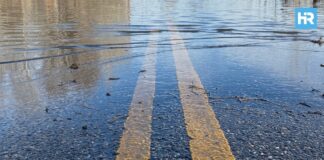Bayonne’s Earth Day cleanup will take place on Saturday, April 26, 2025, from 10:00 a.m. to 12:00 p.m. The city is asking residents, groups, and community organizations to join the effort.
Volunteers will help clean public areas such as parks, sidewalks, and streets across Bayonne. They can choose a cleanup area or have one assigned. The city will provide trash bags and gloves.
- Bayonne will host a citywide Earth Day cleanup on Saturday, April 26, 2025, from 10:00 a.m. to 12:00 p.m., encouraging all residents to join.
- Volunteers can clean parks, sidewalks, and public areas with bags and gloves provided by the city. Sign-up forms are available online.
- Bayonne High School continues its 54-year tradition of shoreline cleanups, led by teacher Dan DiDonna, teaching students the value of environmental care.
How to Sign Up and Get Involved
To sign up, volunteers must fill out a form available online at bayonnenj.org. Once completed, the form should be sent by email to [email protected]. Individual volunteers will be grouped with others. The event is organized by Mayor Jimmy Davis and the Bayonne City Council. They encourage everyone to take part and help clean and improve the city.
This cleanup is timed to support Earth Day, which is celebrated worldwide on April 22. The first Earth Day was held in 1970, and it was started by Senator Gaylord Nelson of Wisconsin. That year, 20 million Americans joined the movement. It became the largest single-day protest in U.S. history at the time. Earth Day was created before there were strong environmental laws. Today, it continues to raise awareness about protecting the environment.
Bayonne High School’s Long Environmental Tradition
Bayonne High School has been part of the city’s environmental work for over 50 years. The school began its shoreline cleanup program in 1971, led by the Ecology Club. On May 1 of that year, three students—Abraham Karlin, Tom Tokar, and Steven Kachmar—helped clean up the Bayonne shoreline for the first time. Tokar later returned to Bayonne High School as a teacher and continued the cleanup tradition for over 30 years.
Today, Dan DiDonna, who teaches environmental science at the school, leads the program. He works with the Passaic Valley Sewerage Commission (PVSC). Together, they organize shoreline cleanups twice a year—once in the spring and once in the fall. Students clean the Newark Bay shoreline behind the school. PVSC supplies gloves, bags, and cleanup trucks. They also collect trash and mulch any large driftwood.
Students often find common litter, such as plastic bottles, snack wrappers, and Styrofoam. DiDonna explains that Styrofoam is the most common and harmful material found. Over the years, students have also discovered unusual items like a mattress, a toilet, a box spring, Power Wheels toys, tires, and 55-gallon oil drums. After collecting the trash, students carry it to PVSC trucks for disposal. Driftwood, including large logs, is also gathered and processed into mulch.
Environmental Lessons in Action
These cleanups are part of the school’s environmental science lessons. DiDonna believes students learn more when they see real-world examples. He says seeing trash along the shoreline helps students understand how pollution affects their city. When students see Styrofoam break into small, fish egg-like pieces in their hands, they begin to connect pollution to the larger ecosystem.
Bayonne is part of northern New Jersey’s watershed. This means the city is connected to the Passaic and Hackensack River systems, which flow through much of the state. Pollution from other areas can end up in Bayonne’s waterways. DiDonna wants students to understand these connections, and the impact pollution has on the environment and the community.
Other teachers, including environmental science staff, join DiDonna during the cleanups. Gene Woods, the president of the Bayonne Education Association, also takes part. Tom Tokar, though retired, returns to help with the cleanups as well.






